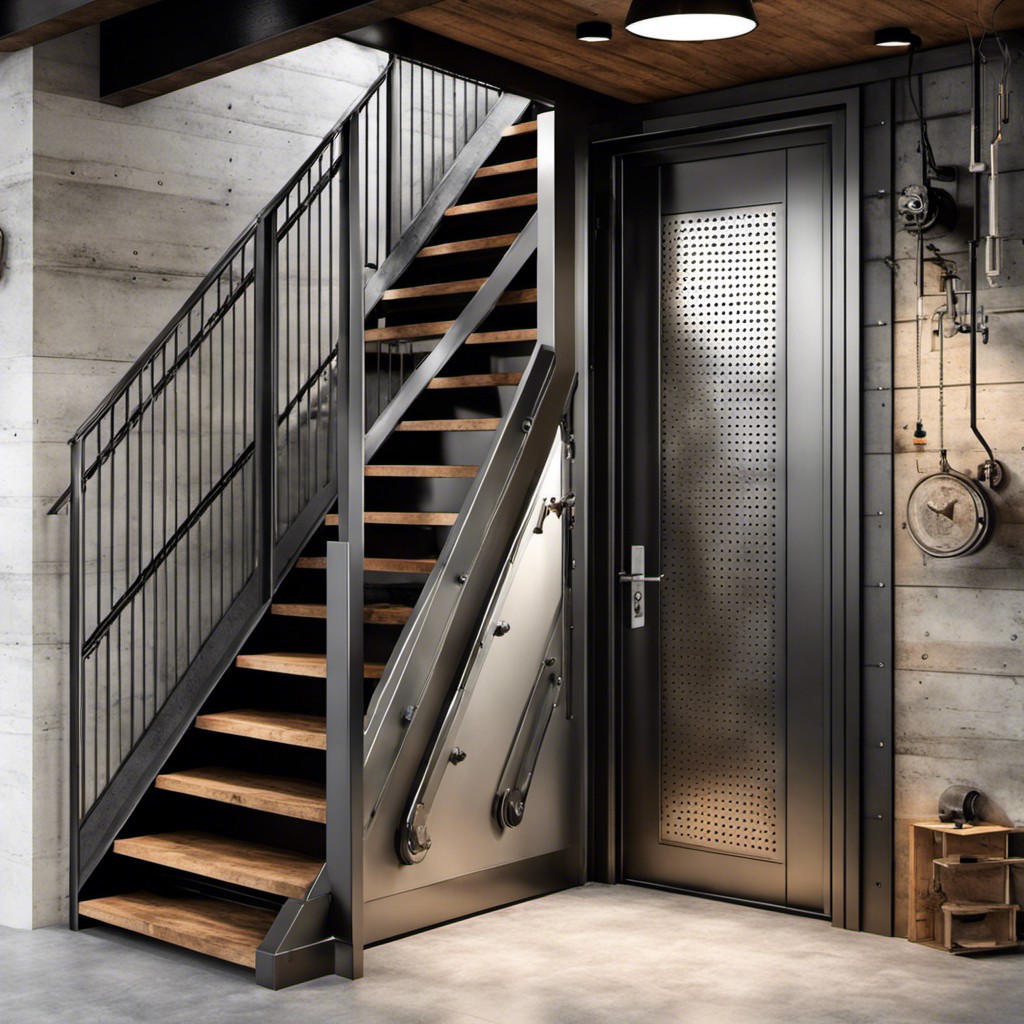Last updated on
Exploring hidden attic door ideas transforms your uppermost space into an intriguing secret haven, because these innovative designs blend functionality with aesthetics for a captivating home feature.
As the creator of these unique attic door designs, I sincerely hope you find them inspiring and enjoy exploring them as much as I relished creating each innovative idea.
Incorporating a hidden attic door into your home design can be an exciting and innovative way to maximize space and add a unique touch to your home. Whether you’re aiming for a seamless integration into your hallway or a bookshelf that doubles as a secret entrance, there’s a plethora of design options available.
This article will delve into a variety of hidden attic door ideas, covering everything from the basics of construction to the finer points of aesthetics. With a comprehensive look at materials, costs, and DIY options, you’ll have all the information you need to start your hidden attic door project.
Table of Contents
Hidden Bookcase Door
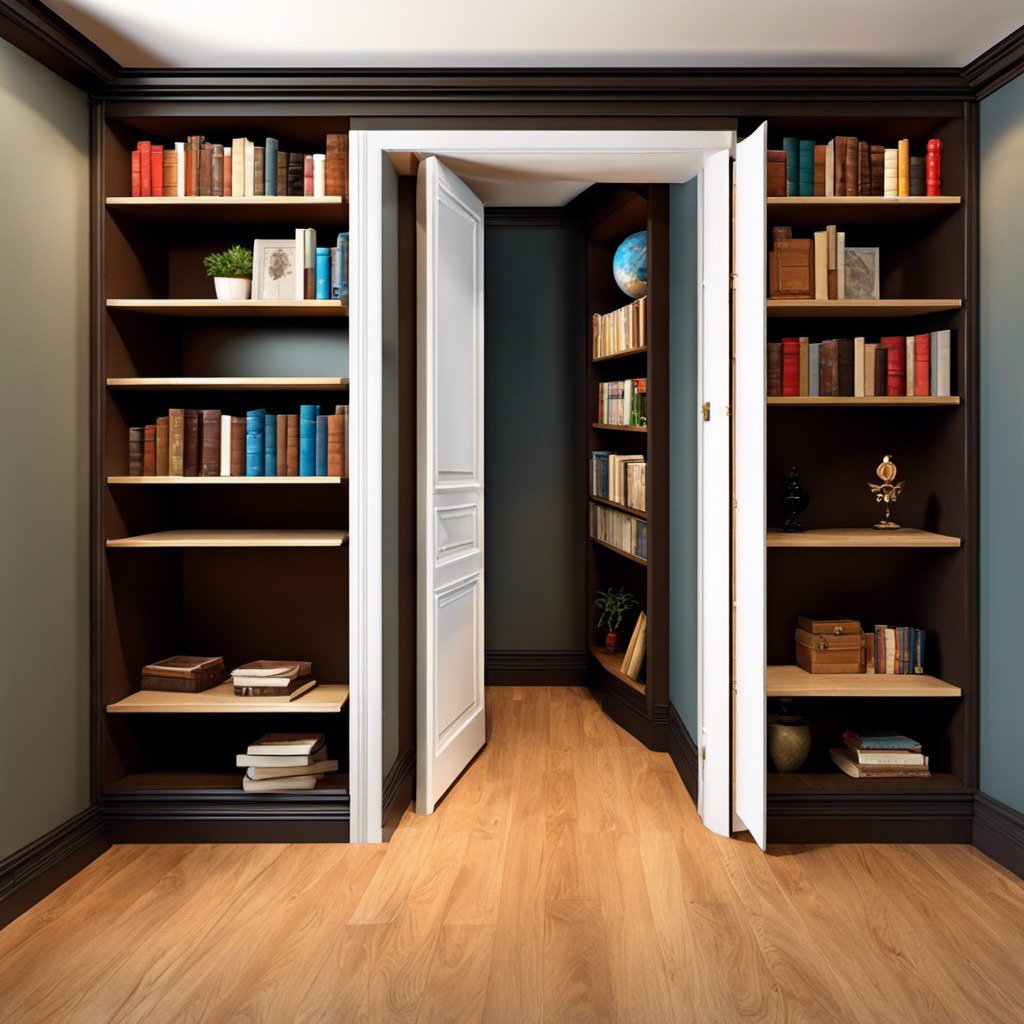
A stylish and practical choice, hidden bookcase doors serve two purposes. Besides granting access to the attic, they also offer ample space for book collections or decorations.
Here’s how the concept underpinning these doors work.
- Illusion: They’re designed to appear as a standard bookshelf, perfectly blending into any room design, keeping the entry to the attic a secret.
- Dual-purpose: While concealing the attic entrance, it also serves as a functional storage unit.
- Customizable: You can tailor the bookcase door to blend seamlessly with room décor. Sizes and styles widely vary, so options aren’t limited.
- Mechanism: Typically, these doors use a pivot hinge mechanism – when you pull, the whole bookcase swivels open.
Unique and skillfully designed, hidden bookcase doors offer a smart solution for those who want to hide their attic entries cleverly. A marriage of aesthetics meets purpose; they turn the ordinary into something quite imaginative.
Remember, for successful application, professional installation might be desirable to ensure the bookcase is secure, functional, and seamless.
Decorated Attic Camouflaged Door

A decorated camouflaged door is a wonderful way of seamlessly integrating your attic entrance with the rest of the space. This idea encourages you to play with wall patterns, textures, and overall room decor.
Here are a few tips to make this concept work:
- 1. Consistent texture usage: Maintain the same material texture for a flawless look. If your walls are plaster, let your door also be plaster.
- 2. Paint cohesion: Match door and wall colors. If the room is eggshell white, paint the door the same hue.
- 3. Matching Patterns: If walls have a pattern or motif, carry it on to the door surface.
- 4. Accessorize carefully: Handle or lock elements should blend with the door, or may even be hidden. Let functionality not compromise aesthetics.
- 5. Furniture placement: Strategically place some furniture to distract the eye, further concealing the door.
This design choice effortlessly marries functionality and style while keeping your attic access a delightful secret.
Wall Mural Secret Door
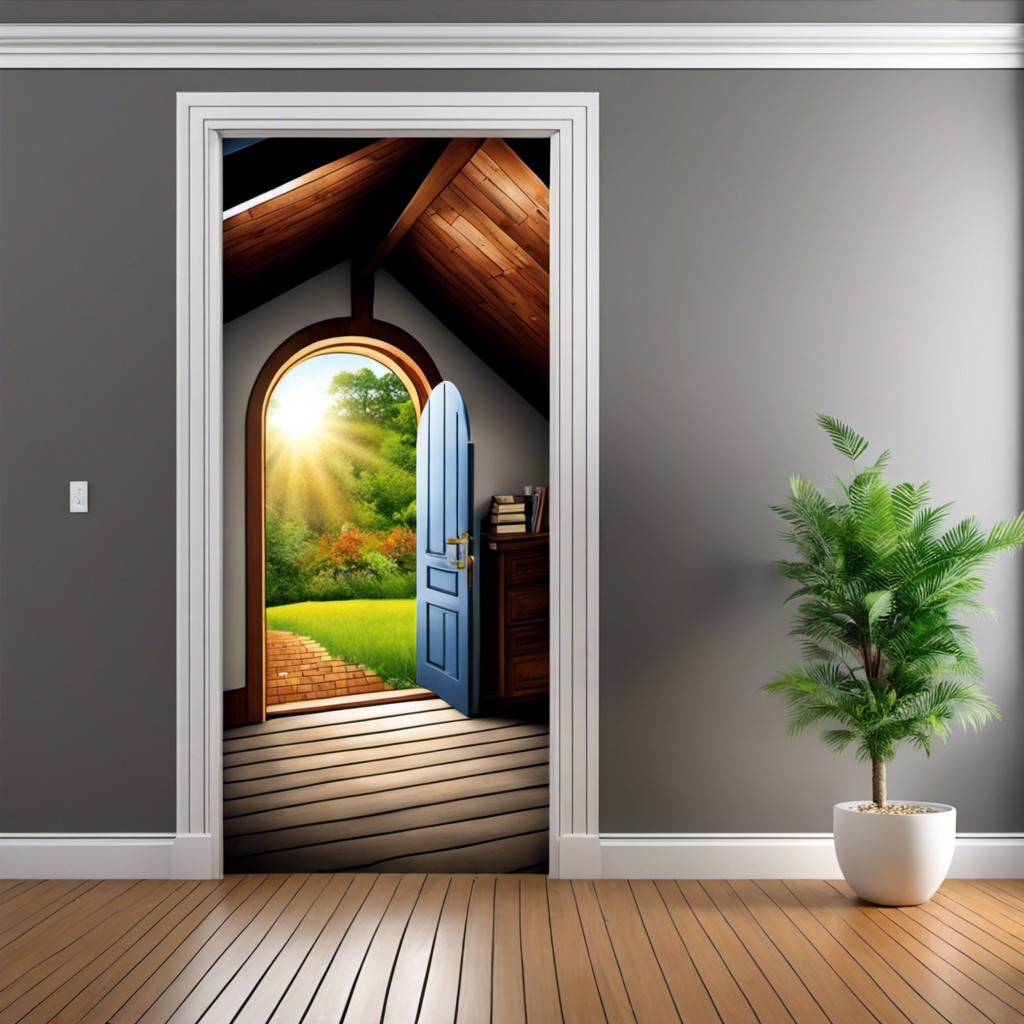
Employing a wall mural as a secret door is a chic way to conceal your attic entrance while adding an artistic touch to your interior. The key here is a seamless integration of the door with the mural painting. Choose a mural design that complements your room style. It could be landscape, abstract, or even a childhood comic theme for a playful touch.
Ensure the door edges align perfectly with the mural’s design to maintain the illusion. Use non-reflective paints to decrease the possibility of revealing the door.
The door handle could be a potential giveaway. Opt for a recessed or flush handle that can be camouflaged into the design. Another option is an electromagnetic lock system that opens with a magnetic key or smart lock systems for a handle-free design.
Remember, the success of this attic door design lies in the way you integrate the door within the mural. Your mural artist and carpenter have to work together closely to accomplish a perfect illusion.
Mirror Face Attic Door

A chic and innovative option, this choice cleverly uses your wall space. By installing a quality mirror where the doorway to the attic exists, you merge function with style. It gives an unsuspecting aesthetic and adds a dash of sophistication to your room.
There are a few elements to consider:
- Selection of a high-quality mirror that reflects your style and matches your room decor.
- Ensuring the door is sturdy enough to support the weight of the mirror.
- Installing a hidden latch or mechanism to open the door without leaving obvious signs of an entry point.
- Maintenance of the mirror door, cleaning regularly to avoid noticeable smudges and scratches.
Remember, it not only conceals your attic entrance quite magnificently but also enhances the illusion of space in your room. However, be cautious while handling, use and daily care differs significantly from a traditional door.
Retractable Ceiling Door
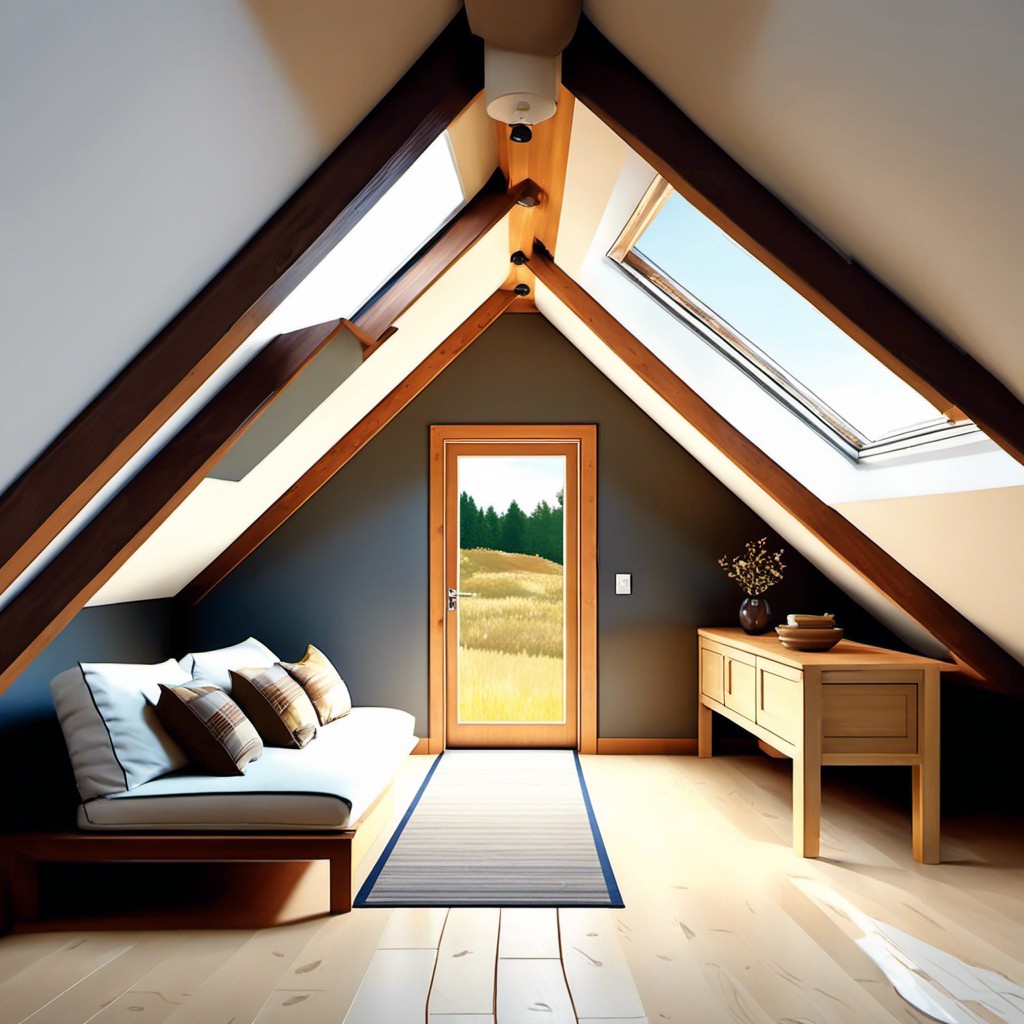
A standout amongst discreet and contemporary design lovers, this style swings upward and disengages from the ceiling itself. It functions in a simple, pull-down motion and fastens securely into the ceiling when not in use, for a superb level of discreetness.
Some key points to consider include:
- 1. The mechanism of springs or hydraulics to hoist the door neatly into the ceiling.
- 2. The importance of aligning the door with the ceiling texture or color for seamless camouflage.
- 3. Optimal for homes with high ceilings, spacious attics, or modern architectural designs.
- 4. The sheer convenience and space-saving aspect in compact rooms or small apartments.
- 5. The crucial role of precise measurements and expert installation, as the technical elements involved are complex.
- 6. The potential for adding a modern, sleek look. This approach gives an exciting twist to traditional attics, leaving guests intrigued and impressed at the cleverly hidden entryway.
Pull Down Stairway Door
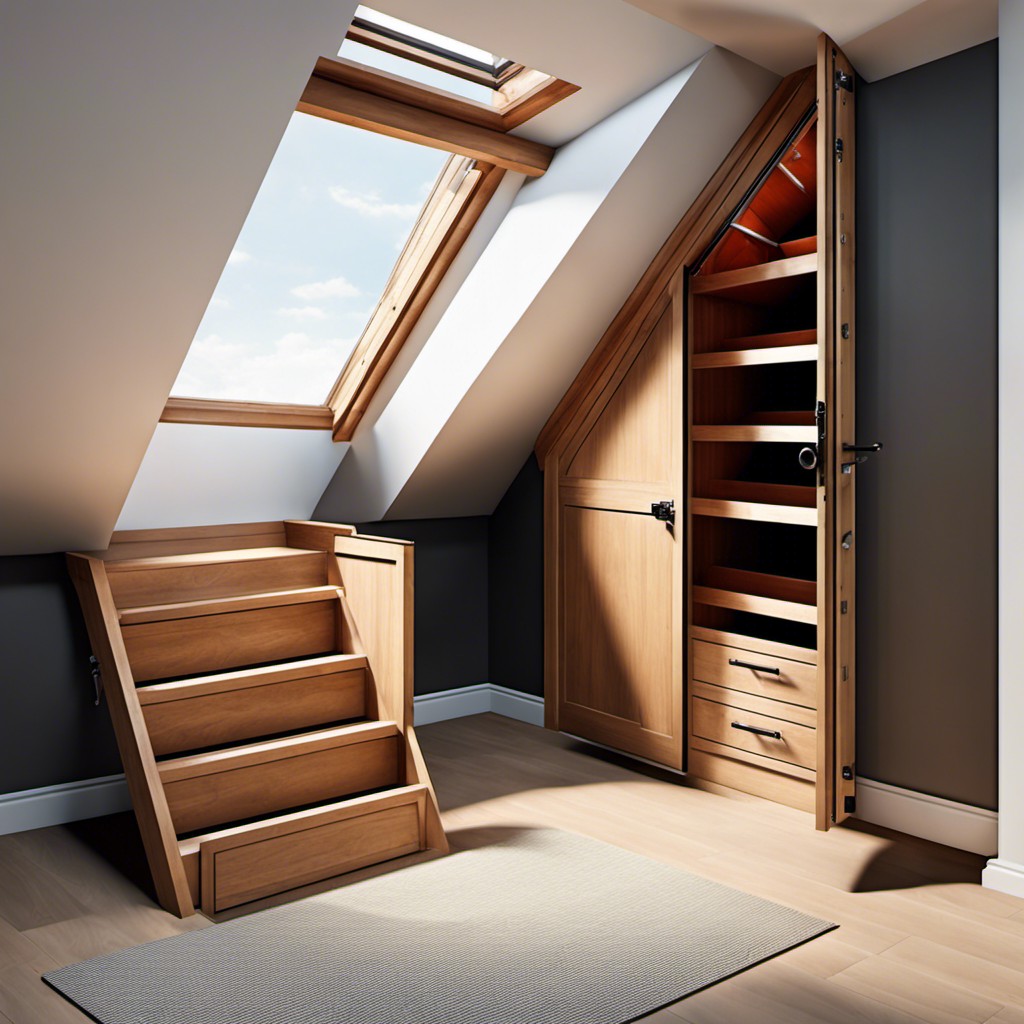
Common in many homes, this option offers practicality and convenience. Installed with a folding or telescoping ladder, ease of access is one of its key features.
Minimal aesthetic interference is another, as when closed, it aligns seamlessly with the ceiling, remaining mostly unnoticed. Many homeowners appreciate the versatility and simplicity this option affords, as it doesn’t require major renovation to install.
Its smooth functionality and clever space usage makes it a popular choice among the muniplicity of hidden attic door styles. Another benefit is the various choices available in terms of material and style, from solid wood to metal, allowing for customization to suit the interior design.
To enhance safety, some models come with handrails and anti-slip steps. With professional installation, it can provide a sturdy and reliable access point to the attic.
Corkboard Message Center Door
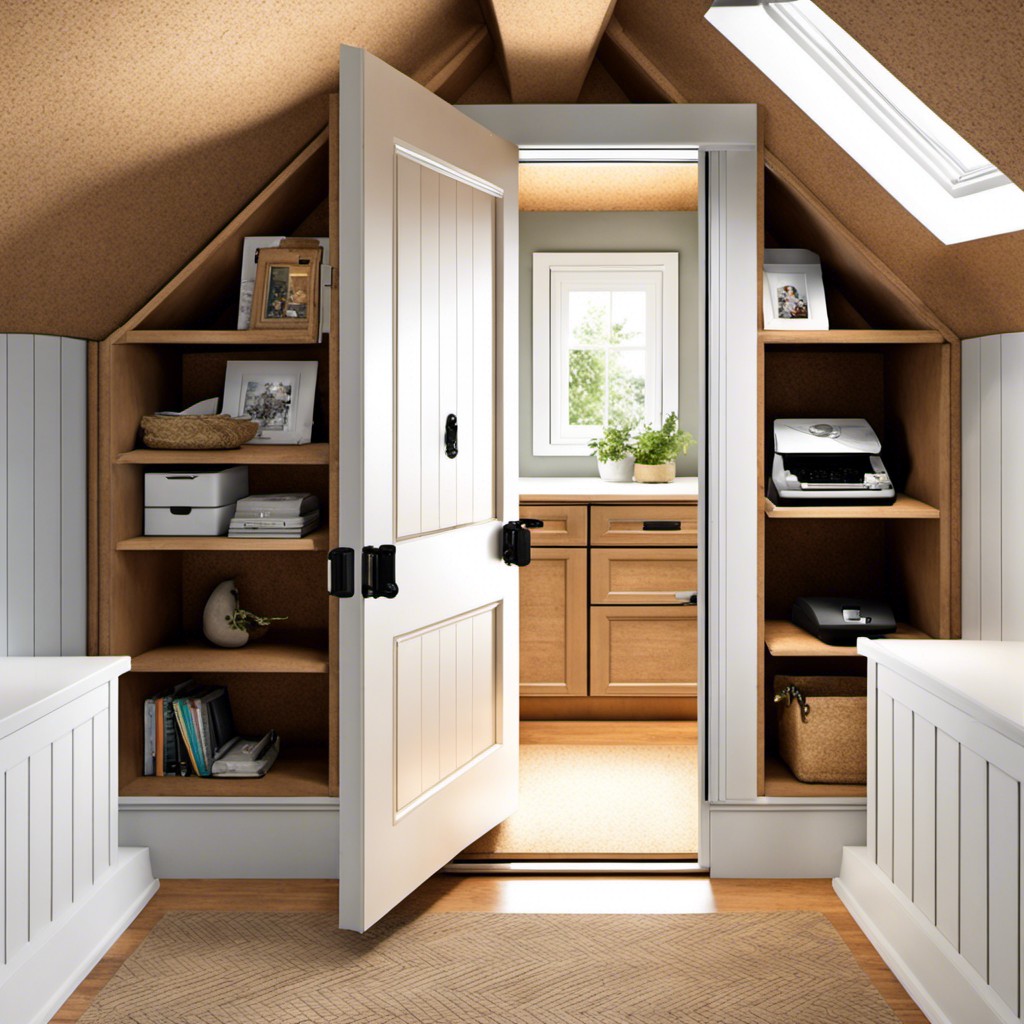
Ideal for a bustling household, this option cleverly integrates your attic entrance into your daily lifestyle. Its key feature is innovation marrying functionality to aesthetics. Here’s how:
1. Seamless Integration: Blends the door into a commonly used element in the home. It feels less like a secret passage and more like smart use of space.
2. Organizational Advantage: Offers a useful platform for reminders, lists, or light family communication. It’s perfect for managing schedules and tasks.
3. Easy DIY: This can be a do-it-yourself project, needing just corkboard sheeting, adhesive, and a cutting tool.
4. Customizable: Allows personalization. Can be as simple or as decorated as preferred, honoring the home’s general decor style.
5. Adaptable Size: Unlike conventional doors, the dimensions are adjustable, allowing for a perfect fit with the attic entrance.
Remember, a flat, flush door works best for this design, ensuring a smooth application of the cork board.
Framed Picture Slide Door
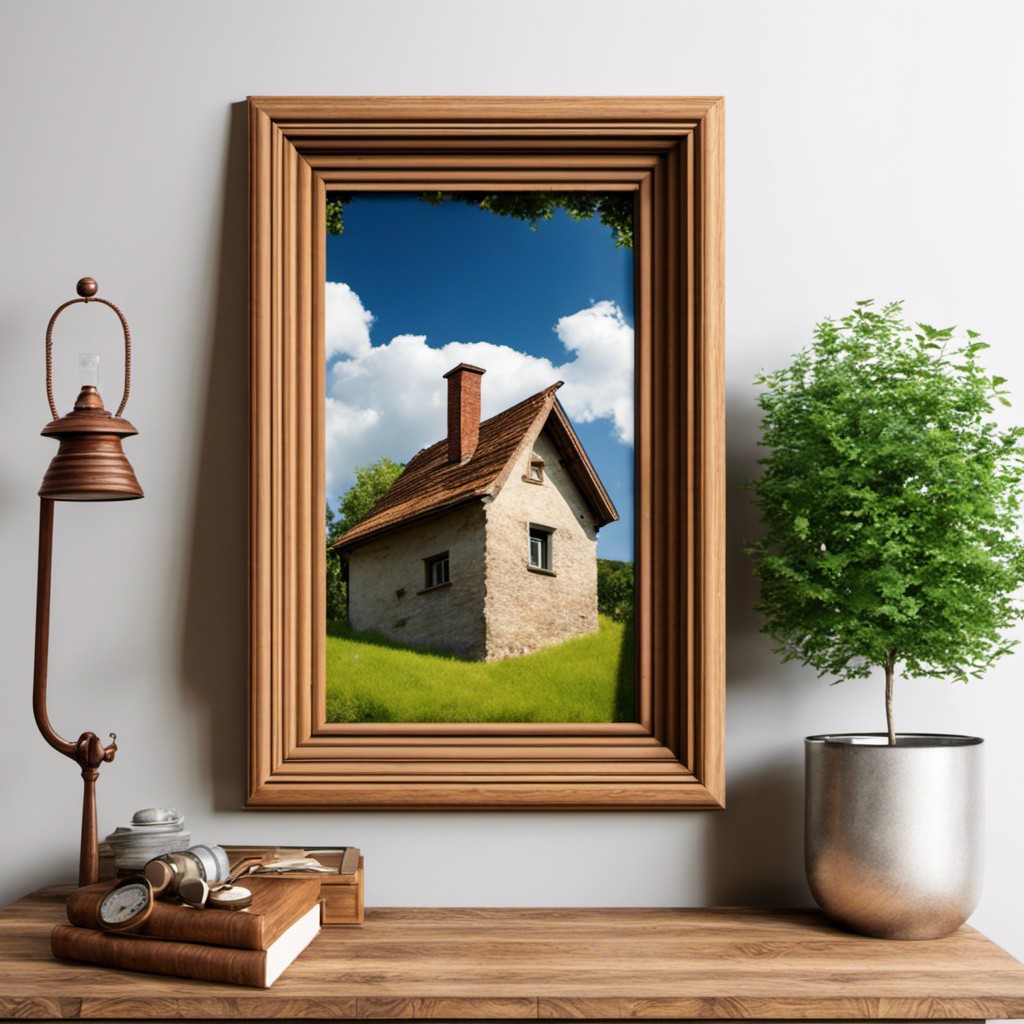
To build excitement around the entrance to your attic, consider making it a centerpiece. Blend it right against the wall with an artwork, a large photo, or a map that you find engaging. By installing a sliding door mechanism, the framed picture can slide over to reveal the entryway.
Here are some points to note when implementing this idea:
- 1. Choose an artwork or picture that matches your room theme to maintain aesthetic consistency.
- 2. Ensure the image is large enough to cover your attic door.
- 3. Remember to use a sliding mechanism that is robust and durable.
- 4. Consider using a professional for installation, although DIY enthusiasts can make it a fun project.
- 5. Make sure the frame around the picture is sturdy as it will be used frequently.
- 6. For children’s safety, situate the sliding path at a height they can’t reach.
Dive into the world of illusion and leave your guests awed with a simple yet creative framed picture slide door.
Hidden Panel Door
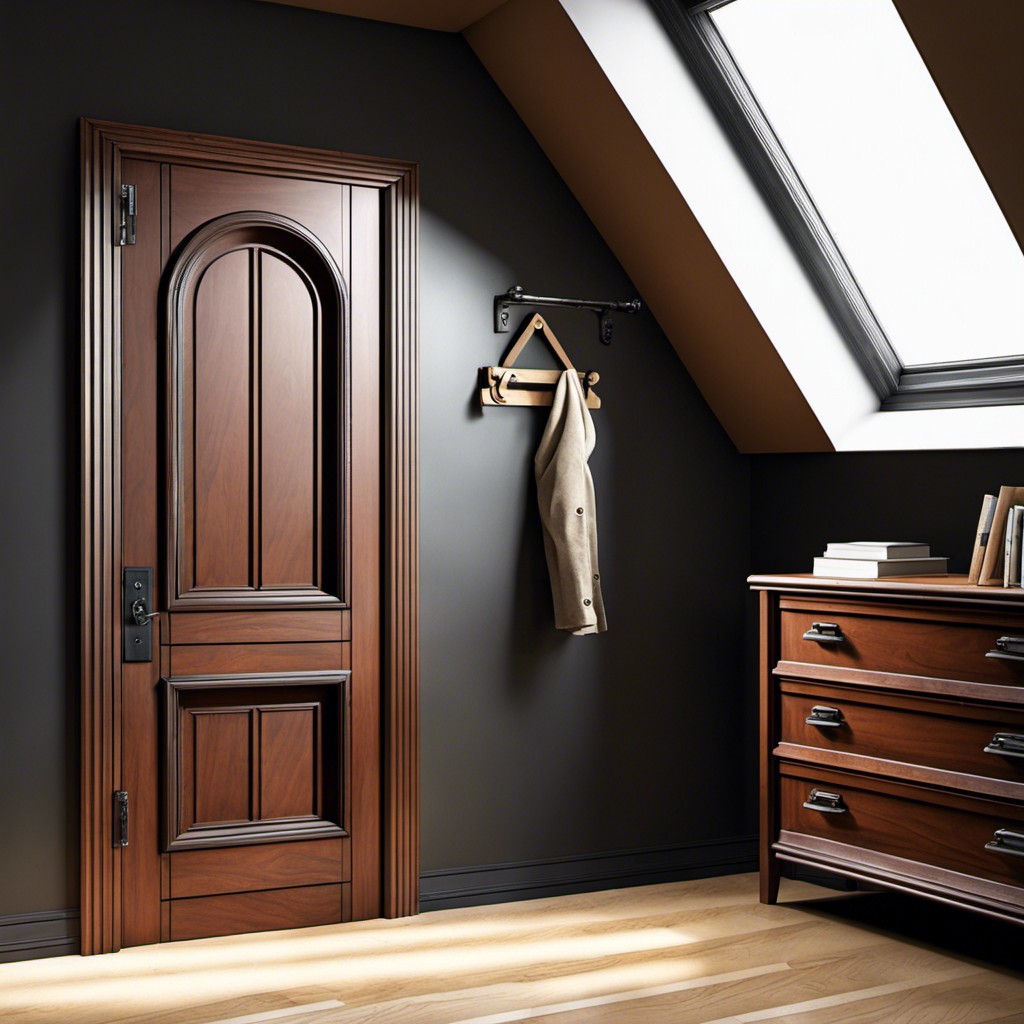
Every hidden panel door starts with high-quality material selection, typically blending in with the existing wall paneling to maintain a seamless look. Usually found in older houses with original paneling, these doors can be a surprising feature in modern decors as well.
Here are the key components:
- Structure: Constructed to look like wall panels but can open using either a push or pull mechanism.
- Accessibility: Designed with a discreet handle or push latch system, adding to its hidden nature.
- Functionality: The door can either swing open like a traditional door or slide out depending on the homeowner’s preference.
- Customization: While painted the same color as surrounding walls for camouflage, homeowners can incorporate creative designs to suit their personal style.
Remember, the key lies in integrating the door seamlessly within the design, ensuring it’s almost indistinguishable from the rest of the wall.
Shelves-like Attic Door

Crafted with especially-designed features, these fixtures cleverly mask the entryway to your attic. Often lined with books, ornaments or photographs, they blend effortlessly into the surroundings of a room, making them invisible to the untrained eye.
1. These shelves serve the dual purpose of storage and concealment. Perfect utilization of space, without compromising on functionality.
2. The door’s operational mechanism is usually simple – the shelf can sway inwards or slide in some designs; the hand picked books or decorations remain undisturbed.
3. Opting for this creative solution aids in adding a touch of mystery and enigma to your home decor, while also enhancing security.
4. The overall design can easily become a statement piece which complements the aesthetic of the room.
5. Besides aesthetics and novelty, another advantage is the added layer of insulation that such a door provides, making it energy efficient.
While they require careful planning and skilled execution, shelves-like attic doors undeniably hold a certain charm, and are a testament to both practicality and design ingenuity.
Light Fixture Secret Door
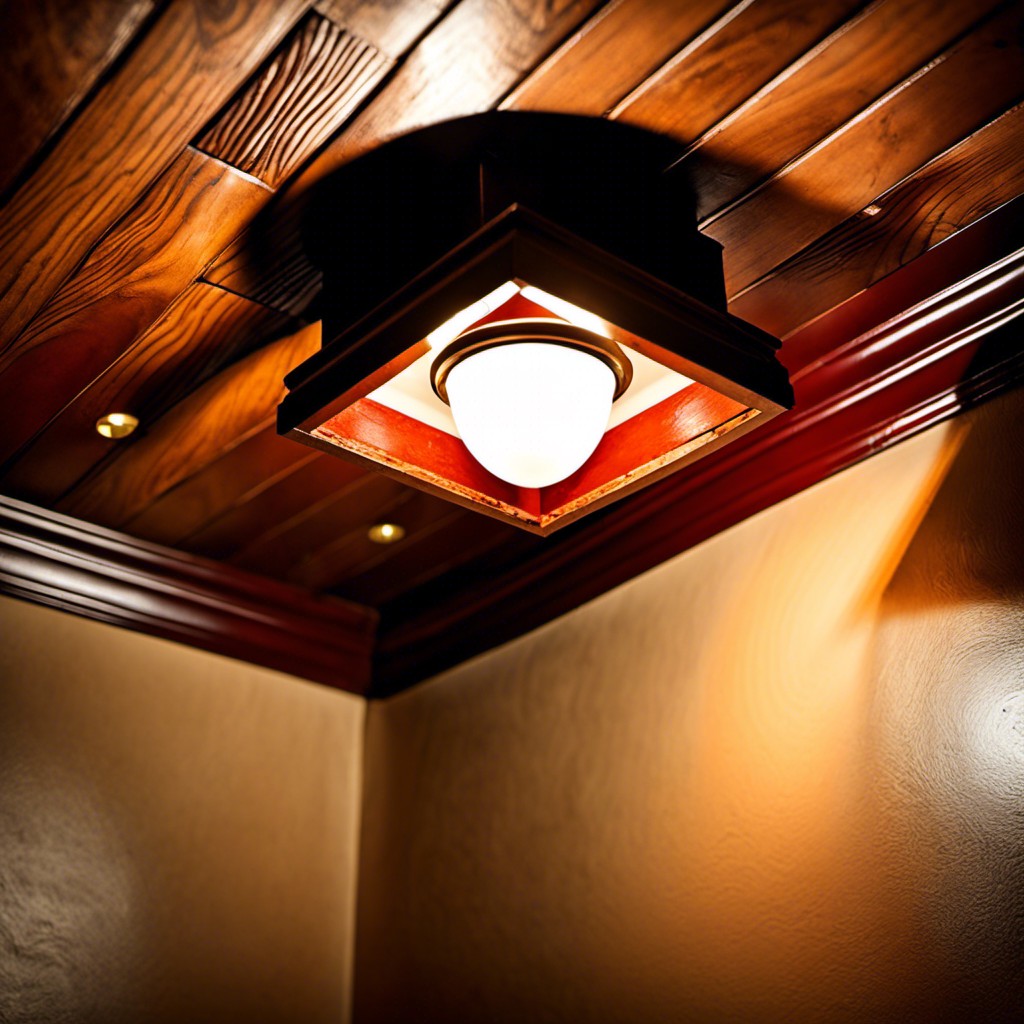
Picture this: a fascinating light fixture, illuminating your room in twilight hues, also has a secret to uncover. Here’s how it works.
1. Choose a large size chandelier or pendant-like structure to effectively disguise the trapdoor above. Not only does this serve a dual purpose but it stuns with its elegance.
2. Consider implementing a remote or switch system for moving the light to the side, revealing the door.
3. Ensure stability in both the fixture as well as the fixture-to-door mechanism for safety and durability.
4. Pay attention to the door’s size and heaviness, adjusting your light choice accordingly.
5. Incorporate a lightweight ladder or stairs that fold or collapse, offering the convenience of accessibility when needed.
Creating ingenuity, not just in secret door ideas, but in how the decor simultaneously functions as essential parts of your home.
Remember, with intricate setup comes responsibility. Regular maintenance checks on the moving parts, hinges, and light connections maximise safety and prolong the life of your secret door.
Chalkboard Attic Door
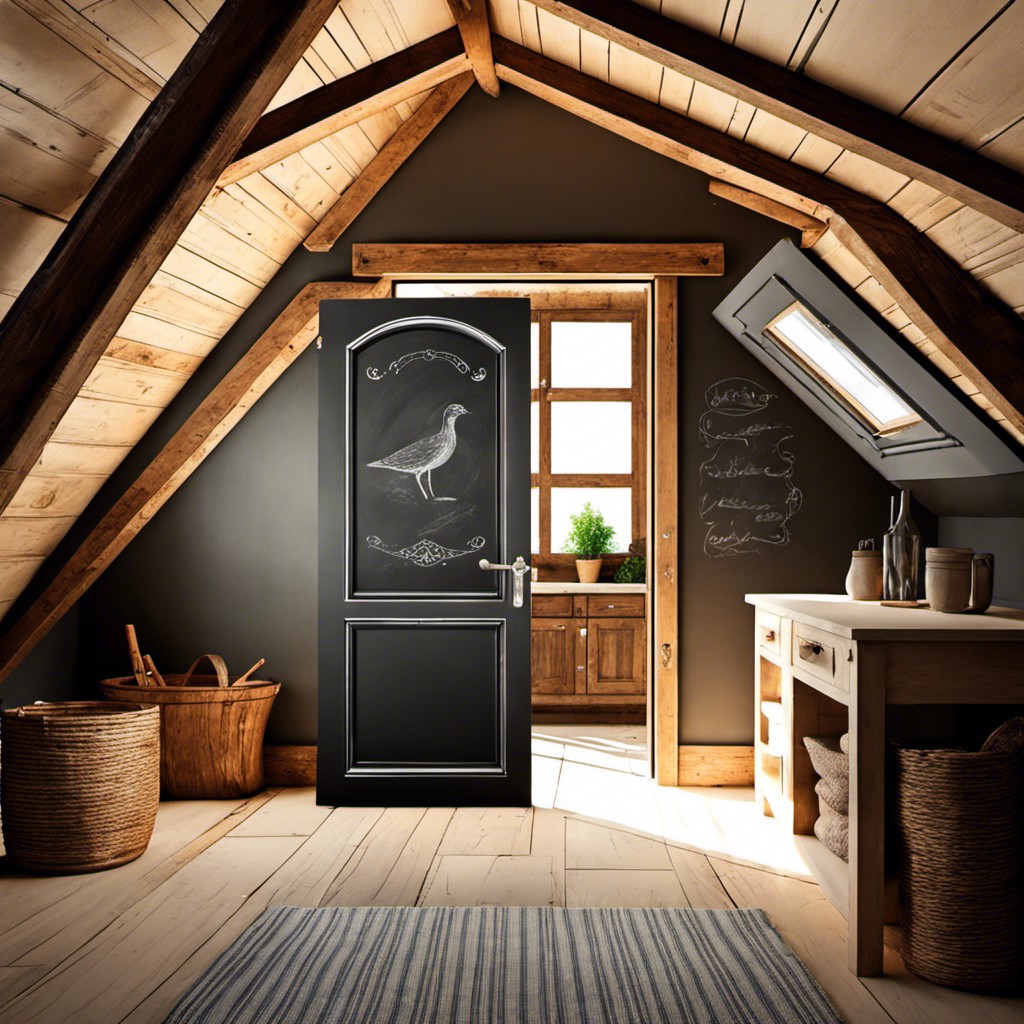
Shifting away from traditional styles, this option allows for both function and fun. Beneficial for homes with children, it provides a space for creativity and can be a unique feature during gatherings.
This door blends easily with other chalkboard themed décor or wall panels, keeping the entrance hidden. It’s vital to use materials designed for high traffic areas to ensure the chalkboard paint’s longevity.
Incorporating decorative trims around the door helps it mesh with your existing interior design. Installation is simple, requiring a classic flush door, a few coats of chalkboard paint, and chalk for doodling.
Crafted correctly, it offers an engaging yet secret path to the additional functional space.
Fold-up Ladder Door
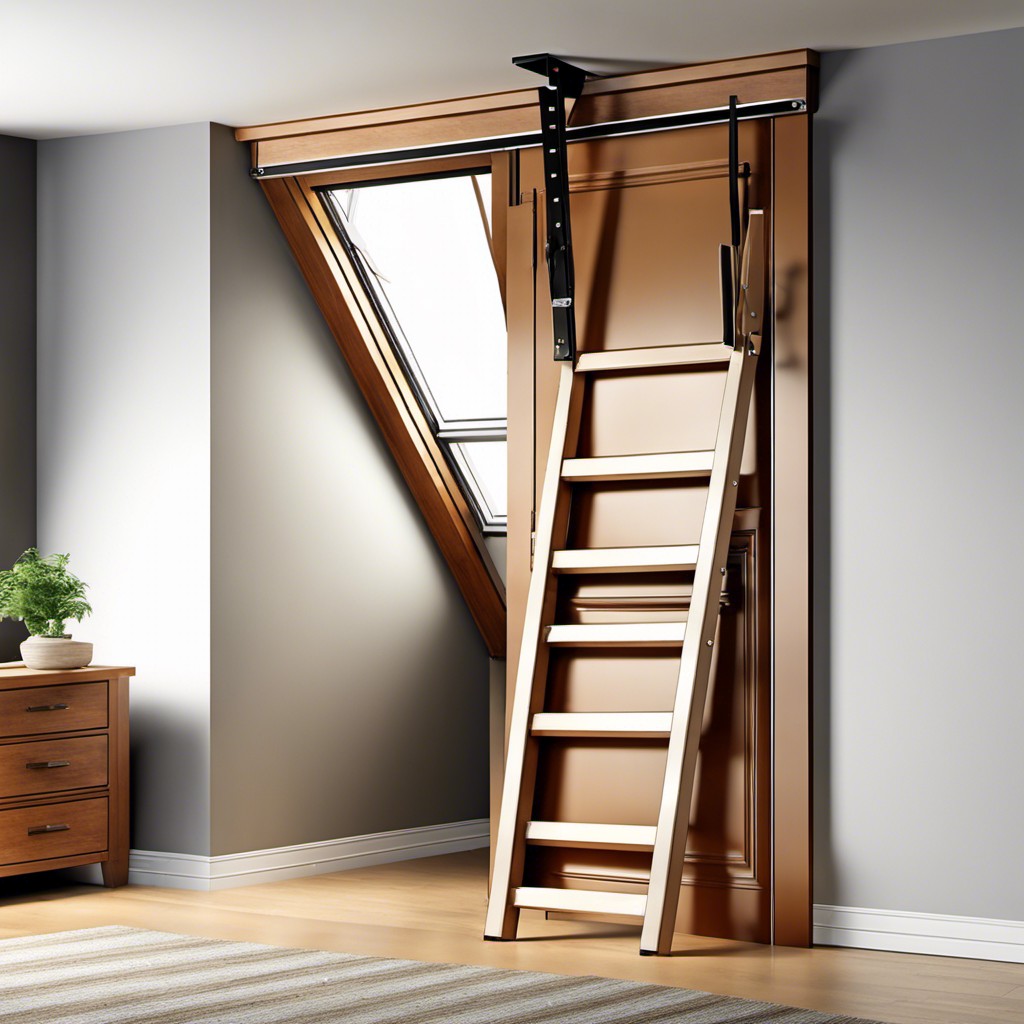
With its compact design, this option maximizes valuable floor space in smaller homes or apartments. It is an innovative solution that neatly folds away when not in use, discreetly occupying minimal room.
Key elements to consider include:
- Installation: Primarily attached to the attic entrance, this door type requires firm anchoring to ensure safety when climbing up or down.
- Materials: Sturdy woods or lightweight metals such as aluminum are the preferred choice, adding to the security and longevity of the structure.
- Practicality: This door combines two functions – access and ladder, streamlining your attic’s entry point. Keep in mind that ladder rungs should be comfortable to grip and climb.
- Customization: The ladder can be painted or stained to match the surrounding decor enhancing its secretive nature.
- Safety: Ensure the ladder stays locked in place once unfolded to prevent collapsing while in use.
It’s a pragmatic solution that smartly conceals your attic with minimal obstruction and interruption from everyday activities.
Faux Fireplace Secret Door
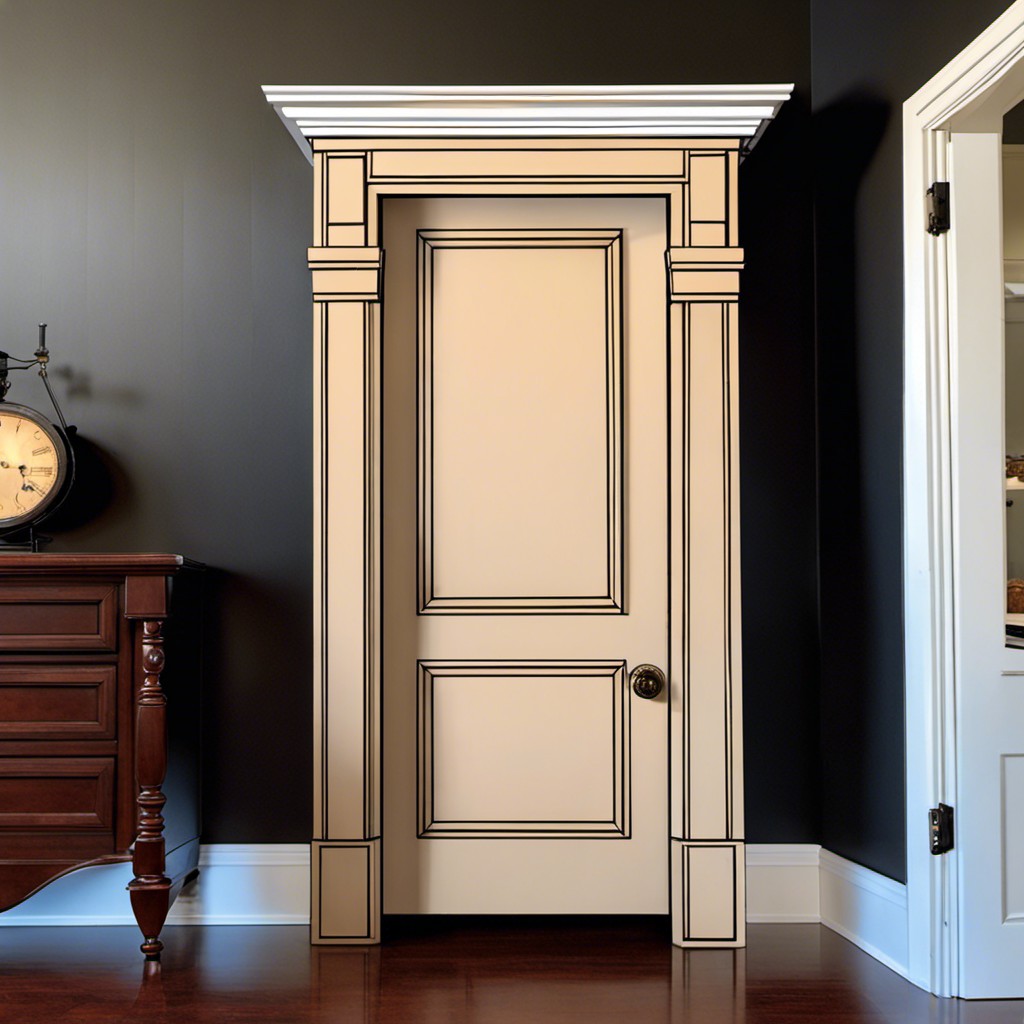
A faux fireplace can serve as a charming and unexpectedly functional feature for concealing your attic door. Choosing the right place is essential. Typically, the end of a hallway or living room works best. It’s all about creating the illusion of a real, working fireplace without the need for an actual chimney.
1. Design: Ensure that the design aligns with your home’s aesthetic. You might choose a classic brick surround, sleek modern tile, or even rustic, reclaimed wood. This disguises the doorway while adding a point of interest.
2. Size: Size matters when it comes to maintaining the illusion. Traditional fireplace mantels and surrounds are large enough to conceal a door effectively.
3. Installation: Installing a faux fireplace requires careful planning, especially if it’s masking a doorway. Engage a competent professional to avoid structural issues.
4. Function: It’s more than a pretty face. For better functionality, consider incorporating bookshelves or a TV niche above the faux fireplace.
Remember, the secret door can either swing inwards or slide away when you decide to access the attic. Both stylish and clever, a faux fireplace secret door serves as an intriguing talking point for visitors.
Floating Shelf Door

Effortlessly blending functionality with aesthetics, this design is quite a head-turner. Here, the door of the attic is cleverly disguised behind a workspace. It’s essential to carefully select and install sturdy shelving units, where the bottom one serves as the entrance to the attic.
- Ideal Space Utilization: Use the door space by creating storage or display areas.
- Blending: Ensure the shelves match the room decor to create a seamless blend.
- Stability: Reinforce the shelf that serves as the door to prevent accidents.
- Accessibility: Incorporate a mechanism that allows for easy opening, e.g., hidden hinges.
- Secret Door: Design the door such that it’s hardly distinguishable.
All in all, this style serves a double role: providing secure access to your attic while offering an additional space for showcasing your favorite decor pieces or organizing office supplies.
Sliding Beadboard Door
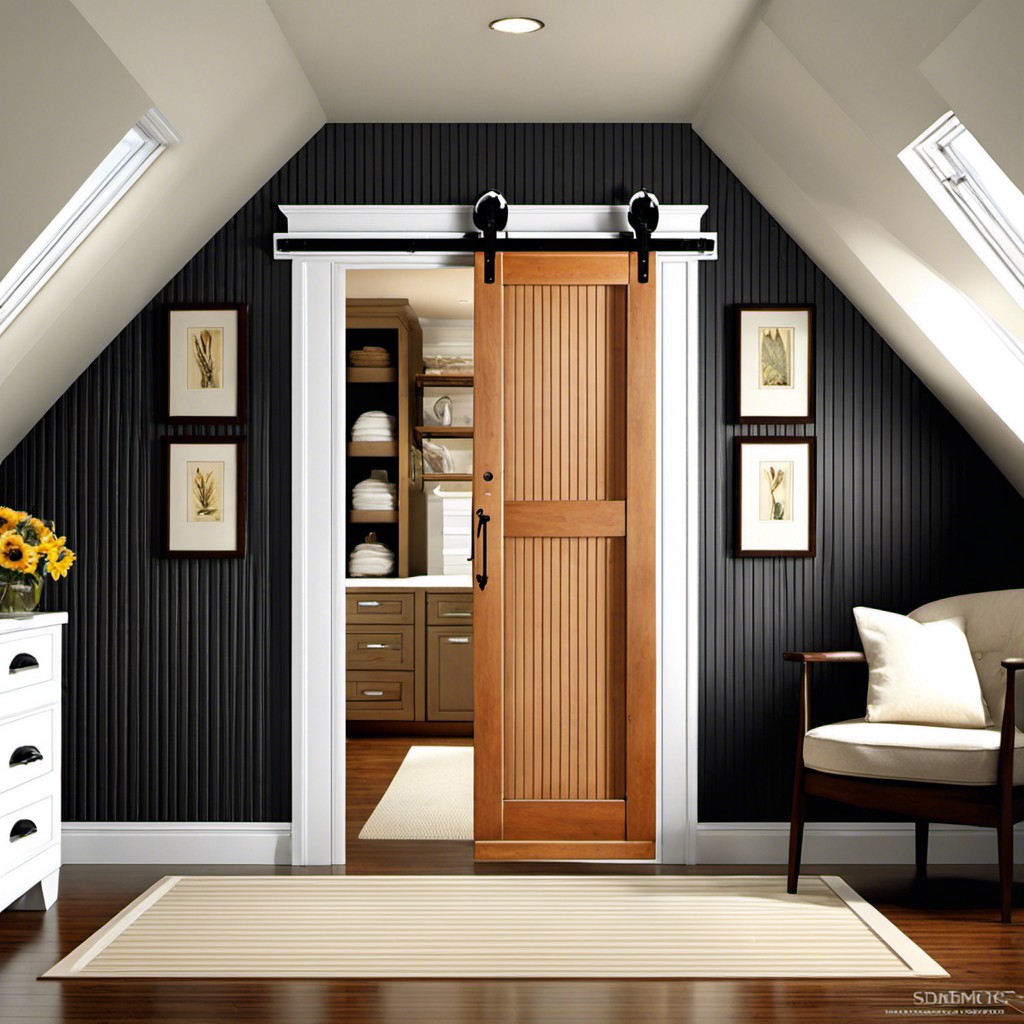
A sliding beadboard door provides both aesthetic appeal and practicality, with its country-inspired design and smooth operational function. Opting for this kind of door adds a series of vertical lines, creating a visually teasing finish that subtly draws attention to the entrance. Likewise, its sliding nature lessens the need for extra space and combines a sense of rustic charm with modern convenience.
To choose the perfect one:
- Choose the right backing material: Consider the strength and durability needed. Plywood and MDF are popular choices, with the latter being more cost-effective.
- Select the right paint: Think about how the color of the door complements the overall room design, and opt for high-quality paint to ensure longevity.
- Consider installation: Professional help might be essential for a smooth and flawless finish. Be wary of DIY, unless confident about personal carpentry skills.
- Measure correctly: Incorrect measurements may result in a misfit that undermines effectiveness. Always double-check measurements before purchase.
Overall, this door solution delivers a pleasing, understated charm, whilst achieving the goal of concealment with flair.
Trap Door With Hideaway Ladder

One ingenious design involves maximizing floor space while achieving the element of surprise. In this solution, a trap door is built flush with the floor and the ladder, instead of being permanently affixed, is engineered to stow away.
Some key points:
- 1. Designed as a part of the floor, this fluently integrates into the existing space.
- 2. A stowaway ladder provides access without becoming a permanent fixture.
- 3. Mechanisms vary, from simple hinges to more sophisticated hydraulic setups.
- 4. The ladder can be stored in nearby closets or built into furniture, maintaining aesthetics.
- 5. Safety measures need to be considered in the design, including sturdy construction and slip-resistant tread on the ladder rungs.
- 6. Such a setup benefits from professional installation to ensure its secure and effective function.
Wallpaper Matching Door

To effectively implement this approach, choose wallpaper that fits perfectly with the ambience of the room. Cover the attic door with the wallpaper ensuring seamlessness with the rest of the wall. This camouflages the door. Ensure the wallpaper has an easy-to-clean material for longevity and aesthetics.
Maintain regular upkeep to avoid any noticeable differences due to wear and tear. This design concept is primarily about blending and creating subtle hints instead of overt statements. Remember, the aim is to make the door almost invisible, harmoniously intertwined with the room décor.
For optimal camouflage, carefully consider the door’s handle choice; recessed handles are more fitting for this design theme.
Hinged Floor Panel Door
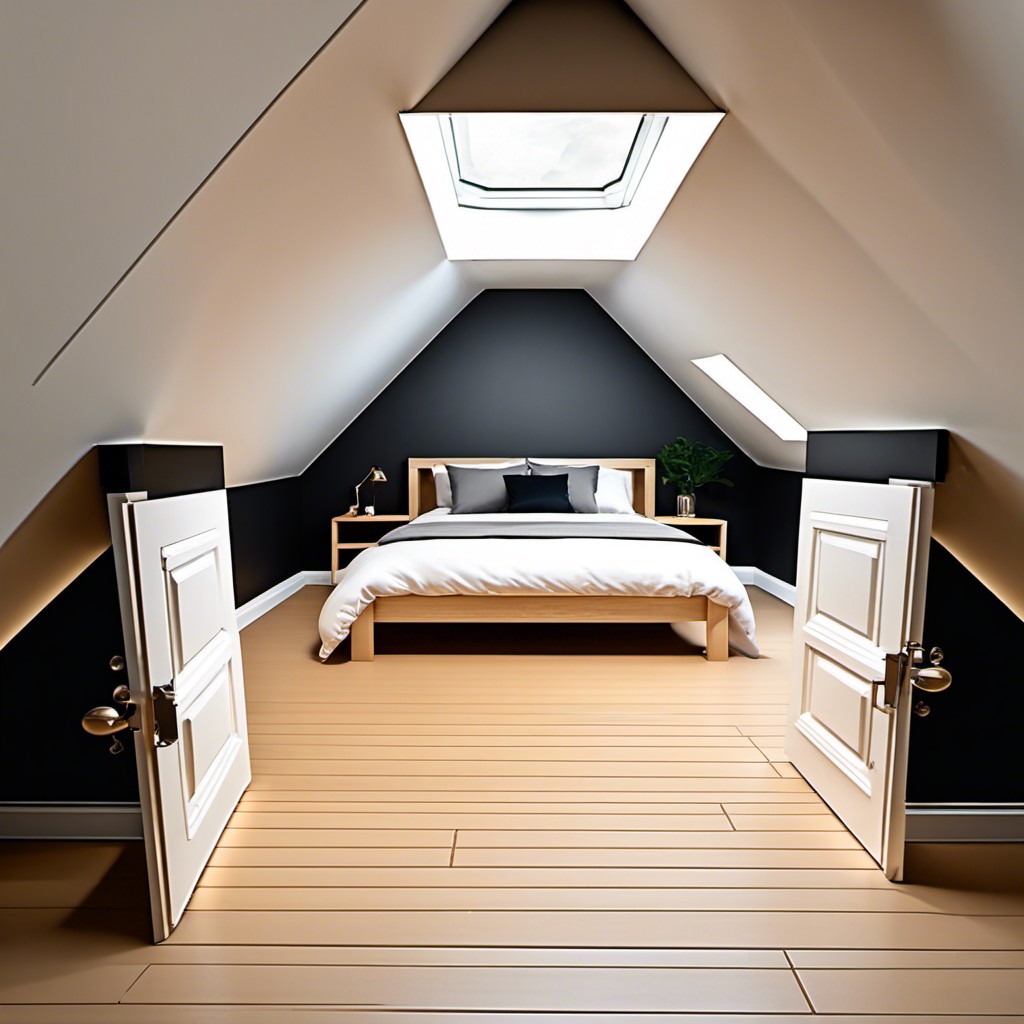
Crafted to seamlessly blend with the rest of the flooring, a hinged floor panel door can serve as an excellent hidden access point to your attic.
1. Blend: Matching the floor type and color is crucial for a flawless merge with the rest of the room. The key is to ensure that the panel doesn’t call attention to itself.
2. Hinge Design: The use of flush hinges, concealed when the panel is closed, helps in maintaining the panel’s inconspicuous nature.
3. Panel Size: The door size directly depends on the room’s setting and the attic access requirements. However, larger panels tend to be more noticeable.
4. Handles: Using a recessed handle prevents the door from becoming a trip hazard. Alternatively, a handle-less design with a push-to-open mechanism may be employed.
5. Safety: The panel should be sturdy enough to bear the usual foot traffic. A locking system could be added for extra security or to prevent children from accessing the attic unsupervised.
6. Insulation: To prevent heat from escaping, the floor panel door should be insulated just like any other attic door.
Full-wall Sliding Door
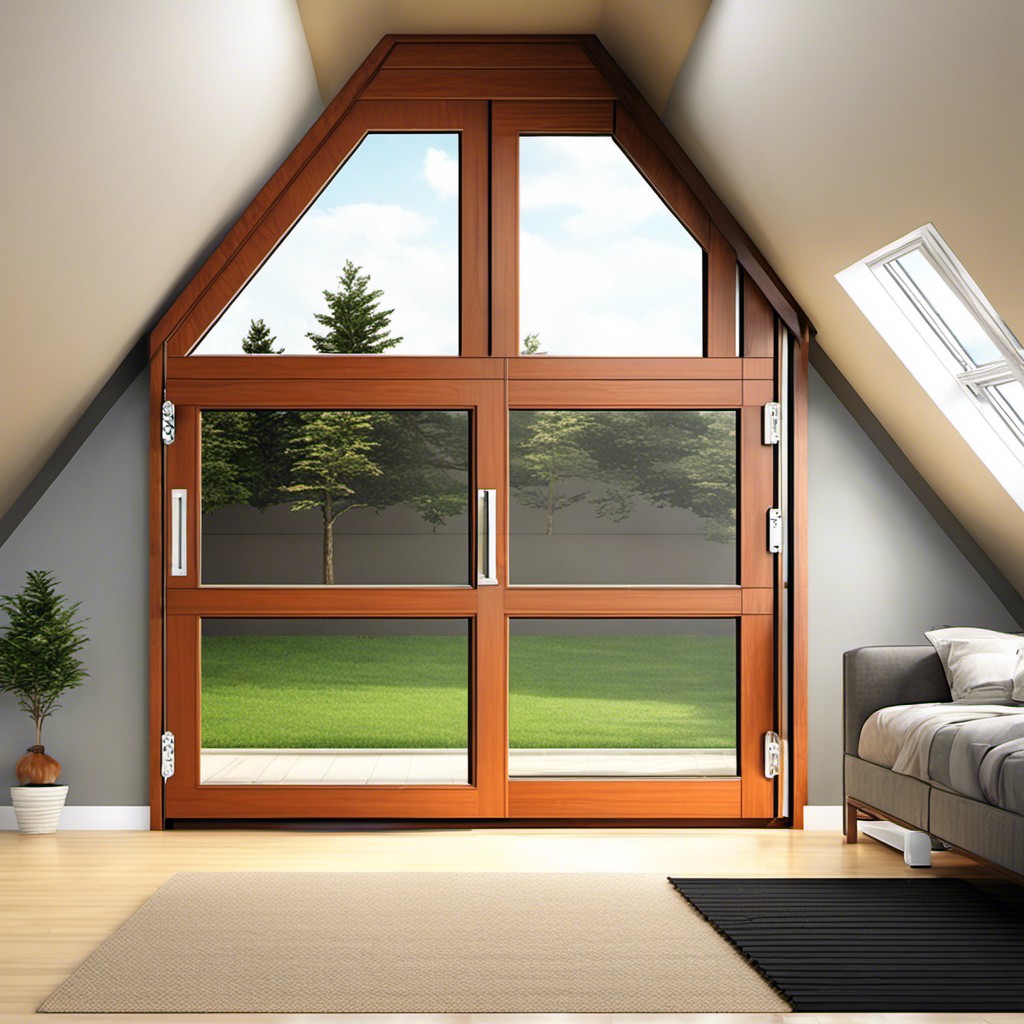
Adhering to the illusion of space continuity, full-wall sliding doors flawlessly mesh with the interior decor. These doors slide along the track, mirroring the wall when closed, making them almost invisible to the unassuming eye.
Here are some defining aspects to consider:
- Material: Opt for materials identical to the wall, aiding the camouflaging effect, and ensuring the door blends seamlessly into the background.
- Track System: The door operates on a track system installed at the top and bottom of the door. It is crucial it remains well-oiled for smooth sliding.
- Handle: Select a recessed or flush pull handle. This will maintain the seamless appearance and prevent anything from sticking out.
- Acoustics: Consider the addition of soundproofing materials within the door construction. Full-wall doors can be thin and may not offer much in terms of sound insulation.
You may also like to read:





